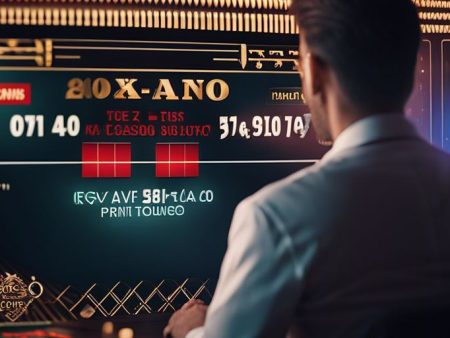
Baccarat is a popular card game that has gained widespread popularity in casinos around the world. In this section, we will provide an overview of what baccarat is, delve into its brief history, and explore some of its popular variations.
What is Baccarat?
Baccarat is a card comparing game that is played between two hands – the player and the banker. The objective of the game is to predict which hand will have a higher total value: the player's hand, the banker's hand, or if it will be a tie. Despite its association with high stakes and luxury, baccarat is a relatively simple game to learn and play.
Brief History of Baccarat
The origins of baccarat can be traced back to 15th-century Italy. The game was initially played with tarot cards and was popular among the Italian nobility. Over time, baccarat made its way to France, where it gained further popularity among the French aristocracy.
In the 19th century, baccarat spread across Europe and eventually reached the shores of the United States. The game underwent various modifications and adaptations, leading to the development of different variations. Today, baccarat is enjoyed by players of all backgrounds in both land-based and online casinos.
Popular Variations of Baccarat
Baccarat has several popular variations that offer unique twists to the traditional gameplay. These variations include:
- Punto Banco: This is the most common version of baccarat found in casinos. In Punto Banco, the player and banker are dealt two cards each, and additional cards may be drawn based on predetermined rules.
- Chemin de Fer: This variation is popular in Europe, particularly in France. In Chemin de Fer, players take turns being the banker, and the role of the banker rotates throughout the game.
- Baccarat Banque: Similar to Chemin de Fer, Baccarat Banque also involves rotating the role of the banker. However, in this variation, the banker is determined by the player who is willing to risk the highest amount.
Each variation has its own set of rules and gameplay nuances, providing players with different experiences and strategies to explore.
As we get deeper into baccarat, we will explore the fundamental aspects of the game, including its rules, gameplay, and betting options. Keep reading to learn more about this intriguing card game.
Basics of Baccarat
Before diving into the world of Baccarat, it's essential to grasp the fundamental aspects of the game. This section will cover the objective of the game, card values in Baccarat, and how Baccarat is played.
Objective of the Game
The objective of Baccarat is to predict which hand, either the player's or the banker's, will have a total closest to 9. In Baccarat, the player and the banker are not referring to specific individuals but rather two different betting options. As a player, you have the choice to bet on either hand. Additionally, you can also bet on a tie, where both hands have the same total.
Card Values in Baccarat
Understanding the values assigned to each card is crucial in Baccarat. The values are as follows:
- Cards 2 to 9: Face value (e.g., 2 has a value of 2, 5 has a value of 5).
- 10, Jack, Queen, and King: Each has a value of 0.
- Ace: Aces have a value of 1.
When the total value of the cards in a hand exceeds 9, the tens digit is dropped. For example, if a hand consists of a 7 and an 8, which adds up to 15, the value of the hand becomes 5.
How Baccarat is Played?
Baccarat is played using a standard 52-card deck. The game starts with the dealer dealing two cards each to the player and the banker. In some cases, a third card may be dealt based on specific rules, which are beyond the scope of this section. The hand that comes closest to a total value of 9 wins the game.
To determine the total value of a hand, add up the card values and apply the rule of dropping the tens digit if necessary. For example, if the player is dealt a 5 and a 7, the total value is 2 (5 + 7 = 12, drop the tens digit).
It's important to note that in Baccarat, the player does not have control over the dealing of the cards or the decision-making process. The game follows a predetermined set of rules that determine when additional cards are drawn or when the existing cards stand.
If you're interested in exploring the specific rules and strategies for playing Baccarat, check out our article on how to play Baccarat at the casino. If you're looking for information on the mini version of the game, head over to our article on how to play mini Baccarat.
By understanding the basics of Baccarat, you can confidently participate in this classic casino game. Remember to familiarize yourself with the rules and strategies to enhance your Baccarat experience.
Baccarat vs. Other Casino Games
When it comes to casino games, baccarat stands out as a unique and captivating option. In this section, we will explore how baccarat compares to other popular casino games like blackjack and poker.
Is Baccarat a Game of Skill?
One of the intriguing aspects of baccarat is the question of whether it is a game of skill or simply a game of chance. Unlike games like poker, which require a combination of strategy, skill, and decision-making, baccarat is primarily a game of luck. The outcome of each hand in baccarat is determined by chance and the cards dealt. Players have no control over the cards they receive or the outcome of the game.
While some players may argue that certain betting strategies can improve their chances in baccarat, it's important to note that these strategies cannot guarantee consistent wins. The game relies heavily on luck and chance, making it more suitable for players who enjoy the thrill of unpredictability.
Comparing Baccarat to Blackjack and Poker
When comparing baccarat to other popular casino games like blackjack and poker, there are several key differences to consider.
Blackjack
Blackjack, also known as twenty-one, is a card game where players aim to have a hand value closer to 21 than the dealer's hand, without exceeding 21. Unlike baccarat, blackjack involves strategic decision-making and skill. Players have the opportunity to make choices such as hitting, standing, doubling down, or splitting their cards, which can significantly impact the outcome of the game. The element of skill in blackjack makes it a popular choice for players who enjoy a game that combines luck and strategy.
Poker
Poker, on the other hand, is a game that combines skill, strategy, and psychological tactics. In poker, players compete against each other, aiming to have the highest-ranking hand or convincing other players to fold. Unlike baccarat, poker involves a complex set of rules, various betting rounds, and the ability to read and bluff opponents. The skill required to excel in poker sets it apart from baccarat and attracts players who enjoy strategic gameplay and social interactions.
While baccarat may not require the same level of skill and decision-making as blackjack and poker, it offers a different kind of excitement. The simplicity of the game, combined with its fast-paced nature and potential for big wins, makes it a popular choice among casino enthusiasts.
If you're interested in learning more about how to play baccarat and exploring its rules and gameplay, check out our article on how to play baccarat at the casino. Additionally, if you're curious about the rules and strategies involved in playing mini baccarat, head over to our article on how to play mini baccarat.
How to Play Mini Baccarat
For those looking to try their hand at mini baccarat, this section will guide you through the rules, gameplay, betting options, and strategies to enhance your gaming experience.
Mini Baccarat Rules and Gameplay
Mini baccarat is a simplified version of the classic baccarat game, with a faster pace and lower betting limits. The objective remains the same: to predict whether the player's hand or the banker's hand will have a higher total value, or if it will result in a tie. The game is typically played with 6 to 8 decks of cards.
The gameplay of mini baccarat is straightforward. Each hand consists of two cards dealt to the player and the banker. The values of the cards are totaled, and the hand with a value closest to 9 wins. The scoring rules are as follows:
If the total value of a hand exceeds 9, only the second digit is considered. For example, if the hand has a total value of 15, it is counted as 5. The dealer handles the card distribution and determines whether a third card is drawn, following specific rules based on the initial two cards dealt.
Betting Options in Mini Baccarat
In mini baccarat, players have three main betting options: Player, Banker, and Tie.
- Betting on the Player's hand means you believe the player's hand will have a higher value than the banker's hand.
- Betting on the Banker's hand means you predict the banker's hand will have a higher value than the player's hand.
- Betting on a Tie means you wager that both the player and the banker will have the same total value.
It's important to note that the term “player” and “banker” do not refer to the actual player and the house. They are simply designations for the two hands being dealt.
Strategies and Tips for Playing Mini Baccarat
While baccarat is largely a game of chance, there are a few strategies and tips that can help improve your chances of winning in mini baccarat:
- Bet on the Banker: Statistically, the banker's hand has a slightly higher chance of winning. The house edge on the banker bet is lower than on the player bet, making it a favorable option.
- Manage Your Bankroll: Set a budget for your gaming session and stick to it. Avoid chasing losses and know when to walk away.
- Avoid the Tie Bet: The tie bet may offer higher payouts, but the odds of a tie occurring are significantly lower. It's generally considered a riskier bet.
- Understand the Odds: Familiarize yourself with the odds and payouts associated with each betting option. This knowledge can help you make informed decisions.
- Practice Bankroll Management: Consider using a progressive betting strategy, such as the Martingale system, to manage your bets. However, always exercise caution and gamble responsibly.
By understanding the rules, exploring the various betting options, and implementing effective strategies, you can enhance your chances of success in mini baccarat. Remember, baccarat is meant to be an enjoyable and thrilling casino game, so approach it with a mindset of fun and responsible gaming. For more information on the general rules of baccarat, you can refer to our article on how to play baccarat at the casino.
FAQs Regarding Baccarat Rule
What is the objective of Baccarat?
The aim of Baccarat is to bet on the hand (Player or Banker) that will have a total value closest to 9.
How are the card values determined in Baccarat?
Cards 2-9 have face value, Aces are worth 1, and 10s and face cards are worth 0. The total value of a hand is the last digit of the sum of its cards.
What are the possible bets in Baccarat?
You can bet on the Player's hand, the Banker's hand, or a Tie between both hands.
What is the house edge in Baccarat?
The house edge is 1.17% for Banker bets, 1.36% for Player bets, and 14% for Tie bets.
Is there a commission on winning Banker bets?
Yes, there is typically a 5% commission on winning Banker bets.
What happens when the total value of a hand exceeds 9?
If the total value exceeds 9, the first digit is dropped, and the value is based on the second digit.
What are the dealing procedures in Baccarat?
Two cards are dealt to both the Player and the Banker. The Player's hand is dealt first, followed by the Banker's hand.
How many people can play Baccarat at the same time?
Most physical Baccarat tables have between 7 and 14 seats for players. Online, including live Baccarat, there could be hundreds of people playing at the same time.

![How to Play Mini Baccarat? From Novice to Pro [2025 Guide]](https://gamingparkey.com/wp-content/uploads/2023/09/Discover-How-to-Play-Mini-Baccarat--450x338.webp)












